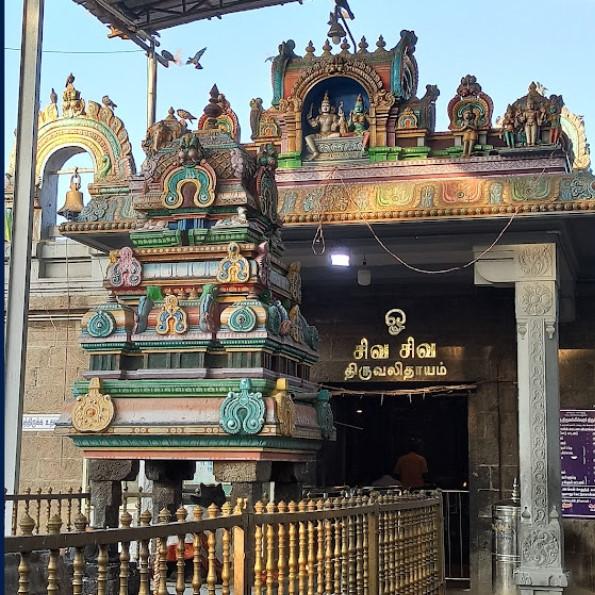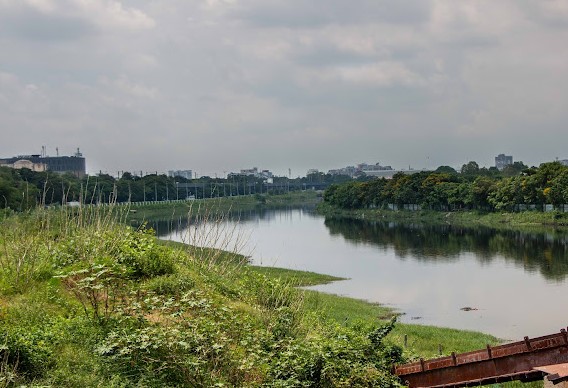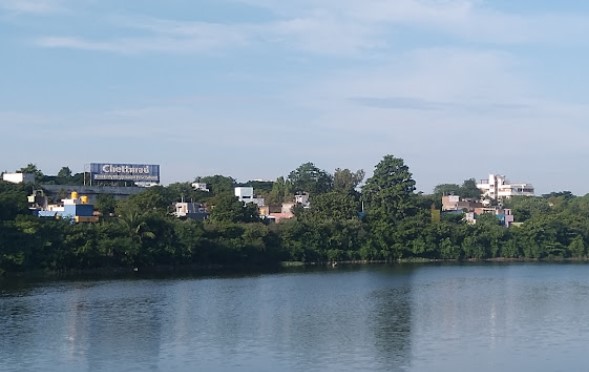The ancient temple, originally constructed by the Chola kings, was historically known as Thiruvalidhaayam, though it is now called Paadi. The temple holds significant historical ties to Rajaraja Chola III, and the term "Padi" refers to a place where armory was stored, highlighting its strategic importance. Rebuilt by Kulottunga Chola III in the 12th century CE, the temple underwent further renovations by Krishna Deva Raya. The nearby Padavettu Amman, located half a kilometer away, is a key part of the temple complex, with a dark history where victorious commanders would offer their heads as sacrifices.
In modern times, the outer praharams have been overtaken by urbanization, with roads and buildings encroaching on the temple grounds. Unfortunately, only the inner praharam remains today, surrounded by the expanding city. The temple tank, which once played an important role, is now visible from a distance, separated by two roads. This transformation reflects the inevitable changes brought on by the development of the surrounding city.
This ancient temple is believed to have been constructed by Chola kings. The historical name of this place is Thiruvalithayam but it is now known as Paadi.
PURANIC SIGNIFICANCE:
Guru Dosha Nivarthi Sthalam:
Planet Jupiter incurred a curse on Menaka, wife of his elder brother. As advised by Rishi Markandeya, he reached this place, had a dip in the sacred spring and worshipped Lord Shiva and gained relief from the curse. It is the faith of the devotees that praying to Jupiter in this temple would be an effective remedy for relief from sins. This temple is believed to be Guru Dosha Nivarthi Sthalam.
Valithayam:
Bharadhwaja, son of Jupiter was born as the son of a sparrow – Kari Kuruvi – also Valian in Tamil. Saddened by his birth as a sparrow, he worshipped Lord Shiva in many sacred places. When he came to this place, he found a Shivalinga under a Kondrai tree and worshipped him. Lord Shiva appeared before Bharadhwaja and made him the leader of birds. Based on this story, the place is called Valithayam and the Lord Valianathar.
Vinayaga married Kamali and Valli here:
According to mythology, Lord Brahma's two daughters Kamali and Valli wished to marry Lord Shiva. Knowing that their wish is very difficult to be fulfilled, Lord Brahma sent them to worship Lord Shiva on the banks of river Paalaru. Shiva, being pleased with their penance, appeared before them and told them that it is not possible for them to marry him as he is already married to Parvathi and advised them to marry Lord Ganapathy. Accordingly, Lord Ganapathy, after conquering the demon king Gajamukhasuran, came to Tiruvalidhaayam and married Kamali and Valli. This is supported by the procession idol of Lord Vinayaka in this wedding form.
Storage Place for Weapons:
This village had been a storage place of weapons during the war times. Such places used by the kings for storing weapons were called Paadi Veedu in ancient days. Also the kings, before starting to the battlefield, pick up their weapons from such Paadi Veedus and worship Sri Kaali and proceed to the battle. Hence the place could have become known as Paadi in later days. As there is also a Padai Veettu Amman temple nearby this temple, which is believed to have been worshipped by the ancient kings.
People worshipped Lord Shiva here:
Jupiter(Guru), Lord Rama, Lava, Kusa, Manmadan, Agasthya, Yama, Vayu, Surya, Moon, Indra, Valiyan, Sage Bharadhwaja and Hanuman are believed to have worshipped the lord here.
Vishnu worshipped Lord Shiva here:
Lord Thirumal in the name of Kesavaperumal worshipped this shrine to rid him of sins attained through killing
Sage Agasthiyar worshipped Lord Shiva here:
After killing Vathapivilvalan sage Agasthiyar worshipped and performed penance to rid the sin.
Lord Brahma attained Mukthi here:
Lord Brahma is said to have attained mukthi here after worshipping Valithayanathar.
ADMINISTRATION:
The administration of the Sri Thiruvalleswarar Temple at Thiruvalidayam (Padi), Chennai, is typically overseen by the Hindu Religious and Charitable Endowments (HR&CE) Department of the Government of Tamil Nadu, as it is a prominent temple in the region.


